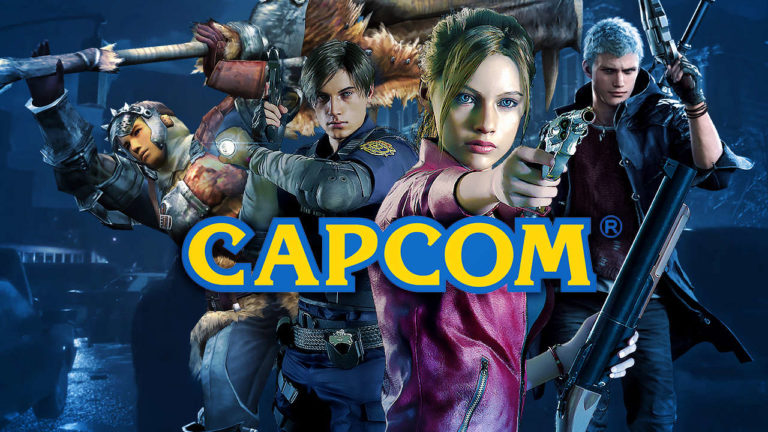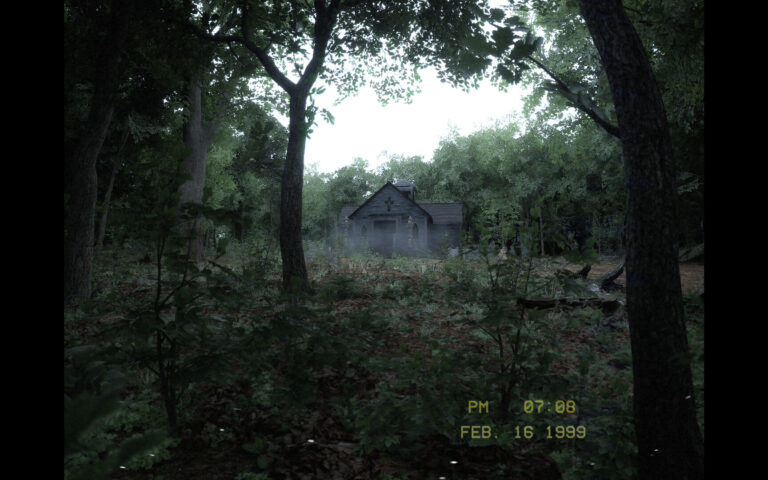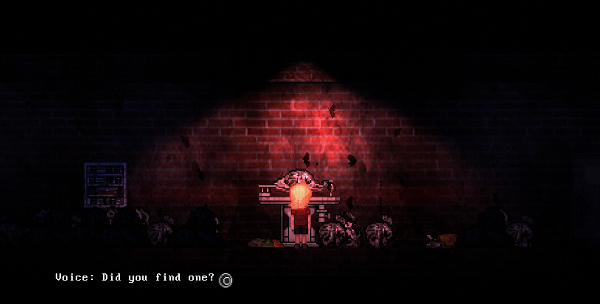
You have no doubt seen our GOTY nominees on the site already, but while many enjoyed and loved Dark Souls 2, The Evil Within and all those other big titles, there were also a few stellar indie games this year that are rarely touched on such award lists. These independent gems might not be a typical Game of the Year, but nonetheless, this is a list of 9 interesting horror and horror-themed indie games from this year that you might have missed when they released. A few rules beforehand:
- Last year we counted Early Access games, but this was somewhat troublesome. Instead, we will only mention games that were released as final products.
- We do count re-releases of smaller and unknown games.
- Just like last year, visual novels and interactive graphic novels will be considered as actual games.
American McGee’s Grimm
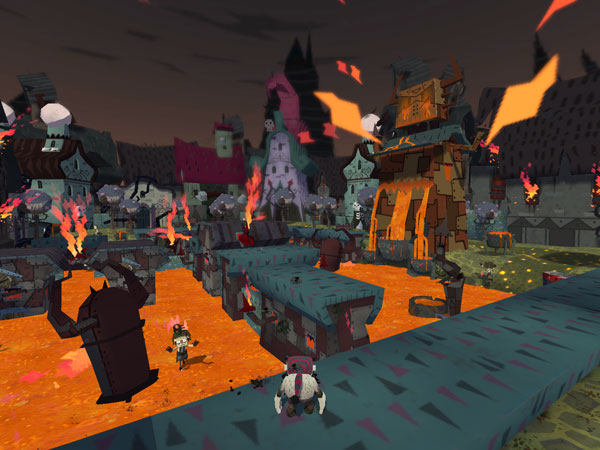
You may know American McGee as that man who loves rewriting childhood fairytales to make them dark and gritty, see also Alice and Akaneiro, so in many ways American McGee’s Grimm is the epitome of his style.
In this raunchy game, you play as a filthy dwarf named Grimm who has a hatred for the sugary nature of modern fairytales. His mere presence corrupts the environment around him, so the goal is to move him around the stages of classic stories, undo all the color and fluffyness, and then corrupt specific objectives. The game is fun to play, but the great art-direction and reliable comedy make it an excellent choice as well.
A compilation of all three seasons hit Steam in January and can be purchased for about $10, so if you are looking for a lenghty comedy platformer with dark themes, then you can’t go wrong with Grimm.
Our Darker Purpose
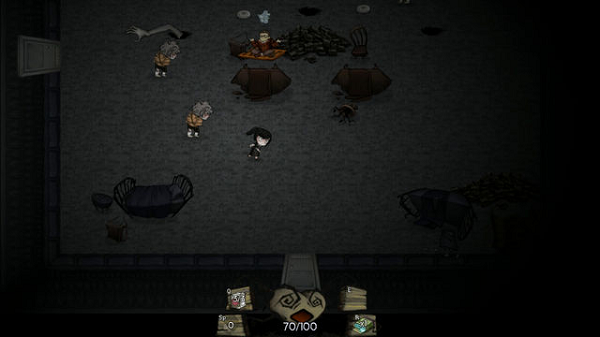
Like I said at the start, GOTY awards often overlook smaller games and nowhere is that more obvious to me than with Our Darker Purpose, a gameplay-focussed, Kickstarted roguelite game that received little press and general attention, but is a genuine 10/10 game for me.
The game is a gothic-styled, isometric action game in which players take on the role of a quiet, introverted girl who is the only survivor of a hostile coup d’etat committed by the attractive, charismatic and strong children. The giant orphanage she lives in is now under their control, so she has to fight her way up the chain, overthrow the leaders of the rebellious children and discover the dark secret behind what actually happened.
The game is a masterful roguelite game in the same vein as The Binding of Isaac, but with much better gameplay. The bosses in particular stand out as some of the most well-designed and challenging encounters of recent memory, so I can highly recommend giving this game a shot.
Call of Cthulhu: The Wasted Land
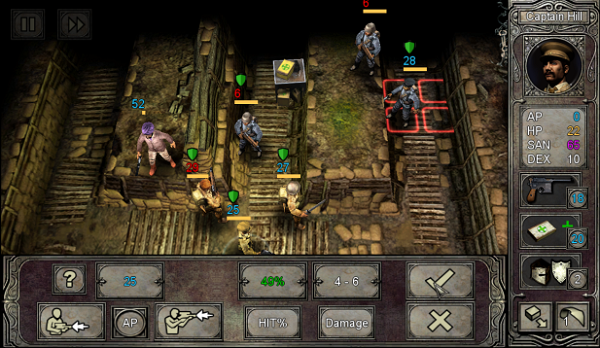
One of the weirder games I got to play this year was Call of Cthulhu: The Wasted Land, a turn-based strategy game that plays similarly to classics like XCom and Syndicate, in which you take control of a military unit during the first World War that has to deal with the occult branch of Germany’s army.
Aside from managing the equipment, items and skills of each individual soldier, during battle you will also have to watch out for their sanity. Facing off against Lovecraftian monsters will frighten soldiers, which may lead to them going either berserk or becoming paralyzed with fear. The design of these monsters is also great and their roles in combat spice up the otherwise typical gameplay.
It isn’t that great as a strategy game, but it’s a novel concept that carries the game well for the eight hours it takes to complete.
The Last Door: Collector’s Edition
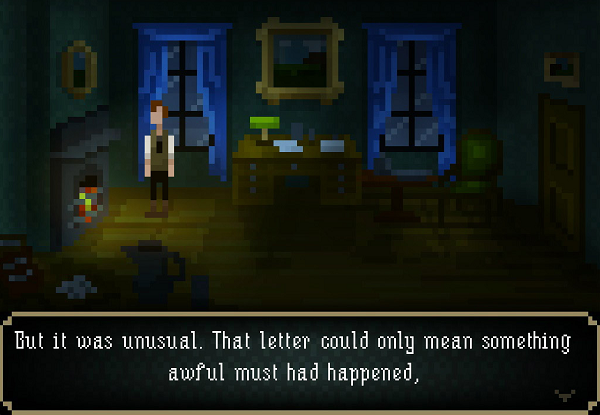
If you are looking for even more Lovecraft-inspired goodness, then The Last Door is unlikely to disappoint. In this beautiful point & click adventure game, players are asked to unravel the truth behind a mysterious ritual that protagonist Jeremiah Devitt performed with his friends as a young man, now that the consequences of it have begun haunting them many years later.
As a puzzle game, it provides you with well-designed and clever inventory-based riddles that are sure to challenge, but unlikely to get you permanently stuck (aside from the ones in chapter 3, darn it), but it’s the atmosphere and art-design that truly sell it. I have played many indie games over the past few years and I can not name a single game that uses the pixelated aesthetic as well as The Last Door. The game is marvelous to look at and manages to create a tense atmosphere with great scares, supported by a fitting soundtrack and intriguing plot.
Still not convinced? Well, you can play free versions of the game on the franchise’s website, but these are not as polished and lack some of the content from the Steam version. Any genuine fan of Lovecraft’s writings may want to check this one out.
Whispering Willows
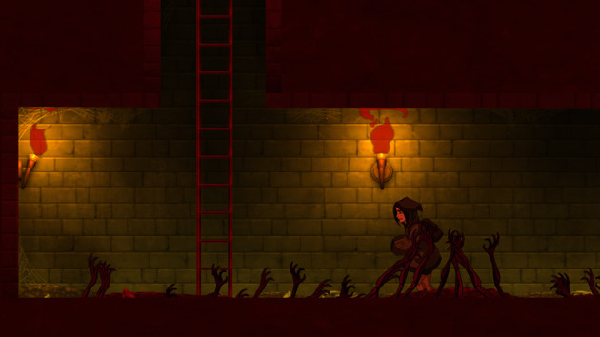
Another puzzle game that was visually impressive this year was Whispering Willows, which originated from the Ouya and was then ported to PC, Mac and Linux later this year. It tells the story of a girl with shamanistic powers whose dad has gone missing while tending to the mansion where the founder of the city once lived. She goes there to find him, but quickly discovers that ghosts are involved and that some catastrophic event happened between the settlers and native Americans that lived in the area centuries ago.
With her powers, the girl has to commune with the ghosts in order to find her way to the room where her father is held, bring peace to the roaming spirits, and discover the truth behind the history of her city. The puzzles are all rather simple, so casual fans of puzzle games or children will have the most fun with this title. Still, veterans of the genre will be able to enjoy the entertaining story and the atmosphere created by the neat visuals, music and animations.
Blackbay Asylum
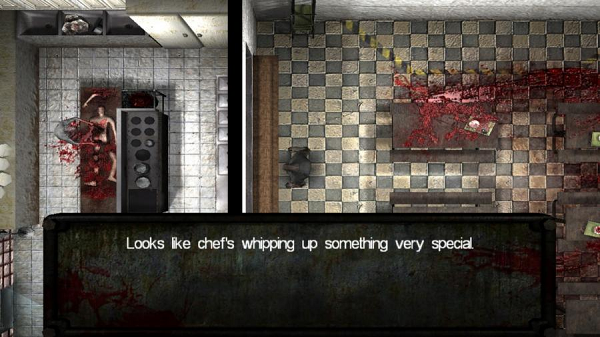
At first glance, Blackbay Asylum may look like an action game, as you take control of an intimidating convict who wouldn’t look misplaced in Manhunt, but in reality Blackbay Asylum is a top-down puzzle game.
The game starts on the day that deranged murderer Doug was supposed to be executed, but he becomes confused when he finds that his cell door is unlocked and that everybody else has either disappeared or was brutally murdered by the monsters that now roam the halls. While Doug is obviously strong, he doesn’t stand a chance against these foes, so instead he has to escape by using his wits and agility.
The puzzles in this game are tougher than those of any other game featured on this list and it’s also the most traditional horror game I played this year; while solving puzzles, players explore a variety of horrific locales with gross visuals and set-pieces. The game looks a bit ugly, but I went in expecting very little and came out pleasantly surprised. Definitely try this one out if you want a game with actual scary bits in it.
Poltergeist
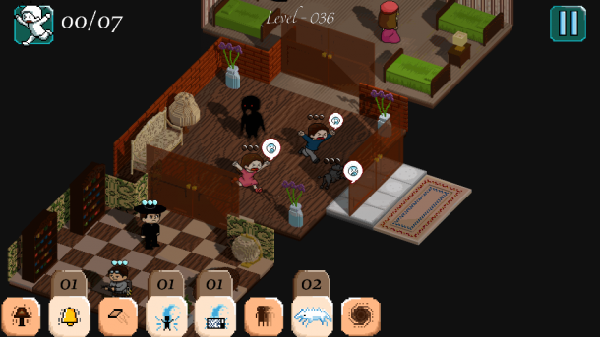
If you are looking for something cutesy, though, then I would instead recommend Poltergeist: A Pixelated Horror, which was the first commercial game of Colombian studio “Glitchy Pixel”.
This game put players in the role of a ghost who becomes angered when his mansion is invaded by ungrateful tenants. The player has classic abilities like possession, making scary noises, and flinging objects around the room, so with these they must scare away the people occupying the rooms of their house. There is a finite amount of moves the player is allowed to make, however, and over time more and more special characters like priests and ghostbusters will be called in to make it more difficult.
I wouldn’t necessarily call the game “kiddie”, since “fun for all the family” is much more fitting; the game is fun and cute, but some of the later levels can definitely provide a meaty challenge.
Vlad the Impaler
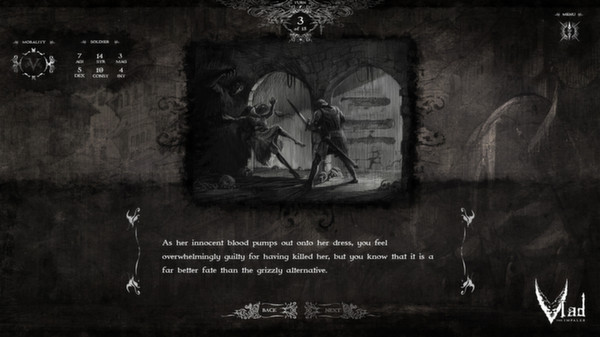
The history behind Vlad III has always intrigued me, whereas many others choose to ignore it in favor of the Dracula stories that were based on him. Vlad the Impaler mixes these two together and creates a fun what-if story that keeps the monsters and vampires, but also shows Vlad in a more sympathetic light.
The game is an interactive graphic novel in which you have fifteen turns to unravel a conspiracy that is brewing in Istanbul. To do this, you must visit various locales to find information and make new allies. Doing this will build up your skills (magic, strength, intelligence) and the choices you make affect your morality, which will change what decisions will work out positively for you in the future.
The game is similar in many ways to The Yawgh, but with darker and more detailed illustrations. Nice to look at and a decent enough read, so if you don’t necessarily need a lot of gameplay in your games, then this is a nice way to spend a few hours.
Claire
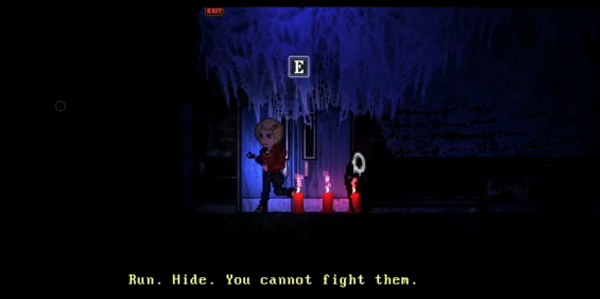
And, to finish this year’s list, I wanted to highlight a rather special game. When Claire released, there were a lot of problems with it and in my review I gave the game a 5/10. The team behind Claire has been diligently pumping out updates, though, and man has it improved the game.
Like the indie hit Lone Survivor that released back in 2012, Claire is a side-scrolling survival horror game in which you must explore abandoned environments. The titular girl is recovering from a traumatic childhood while tending to her mother in a hospital, but suddenly the world around her changes and monsters begin roaming the hallways. While the game is visually impressive, featuring excellent sprites and morbid environmental design, the story is what interested me the most: it’s essentially a psychological journey through Claire’s character with vastly different endings based on your subtle choices throughout the game.
Fans of Silent Hill will almost definitely appreciate this title and, like with Blackbay Asylum and The Last Door, it’s one of the few games this year that provides genuine scares. Even if you picked the game up at launch, I would still recommend giving it another try now that it has been patched.

